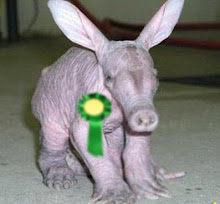Mascots
 Mascots are seen by many as a new phenonomon, part of the American sporting entertainment business to be placed in the same bracket as cheerleading or fireworks before the big match. But as this picture from 1957 shows, mascots were part of the British footballing culture even back then.
Mascots are seen by many as a new phenonomon, part of the American sporting entertainment business to be placed in the same bracket as cheerleading or fireworks before the big match. But as this picture from 1957 shows, mascots were part of the British footballing culture even back then.To take the example of Midlands club West Brom in the late forties they had a lucky black cat as a mascot. In the early 50s a "boy mascot" by the name of Johnny Tromans took over.
The man you can see alongside Johnny Tromans in the picture is "Pancho". I have no idea where the Mexican link comes into West Bromwich Albion football culture, I suspect its been lost in the midst of time.

In the 60s Blackpool also experimented with small boys and animals on the pitchside. This picture depicts a young lad from Blackpool in full team colours, one sock rolled down - years before Steve Claridge was knocking around the lower leagues - and a duck in his arms.
In the early days of Blackpool FC an act called "The Atomic Boys" used to perform and a duck was part of their act. The duck became an unofficial mascot of the side and the animal became part of Blackpool folklore - even after the Atomic Boys had performed their last 'gig'. A duck even travelled to Wembley with Blackpool in 1953, a famous year for Blackpool as they took home the cup. (Incidentally in 1954 Johnny Tromans took West Brom to Wembley and brought home the cup).
Mascots aren't a new thing. They're just far more goady and commercial nowadays. I also doubt whether Pancho (or the duck) ever onced faced a penalty at half time taken by a local radio DJ.
Labels: Blackpool, duck, Johnny Tromans, Mascot, Pancho, West Brom


0 Comments:
Post a Comment
Subscribe to Post Comments [Atom]
<< Home